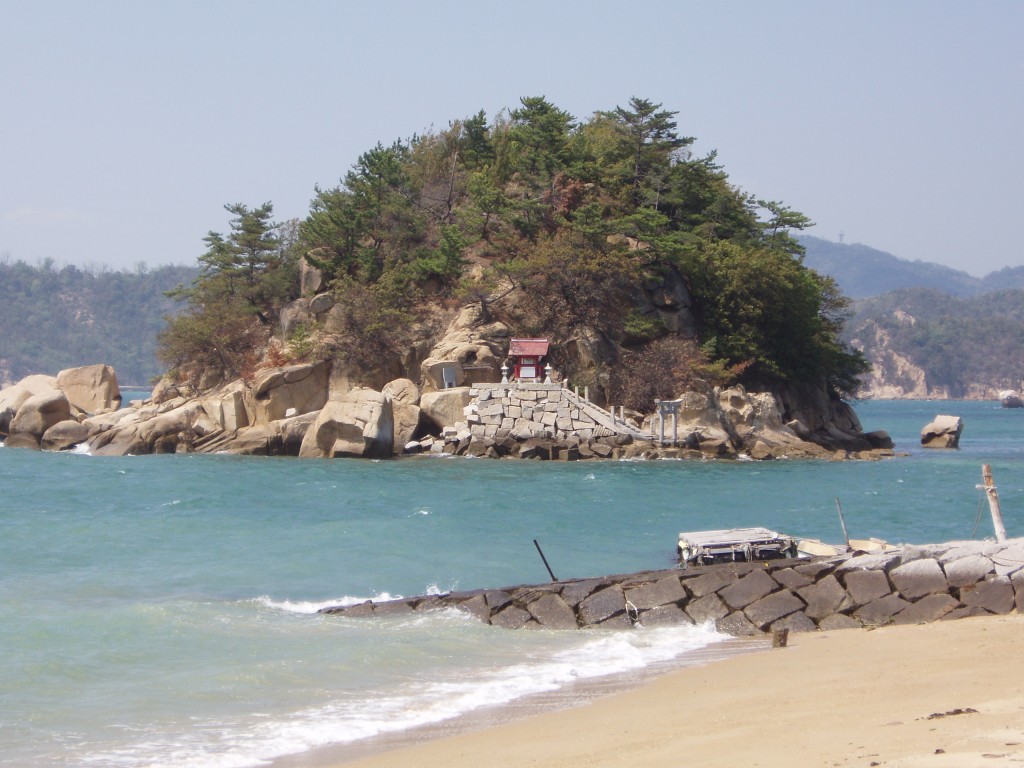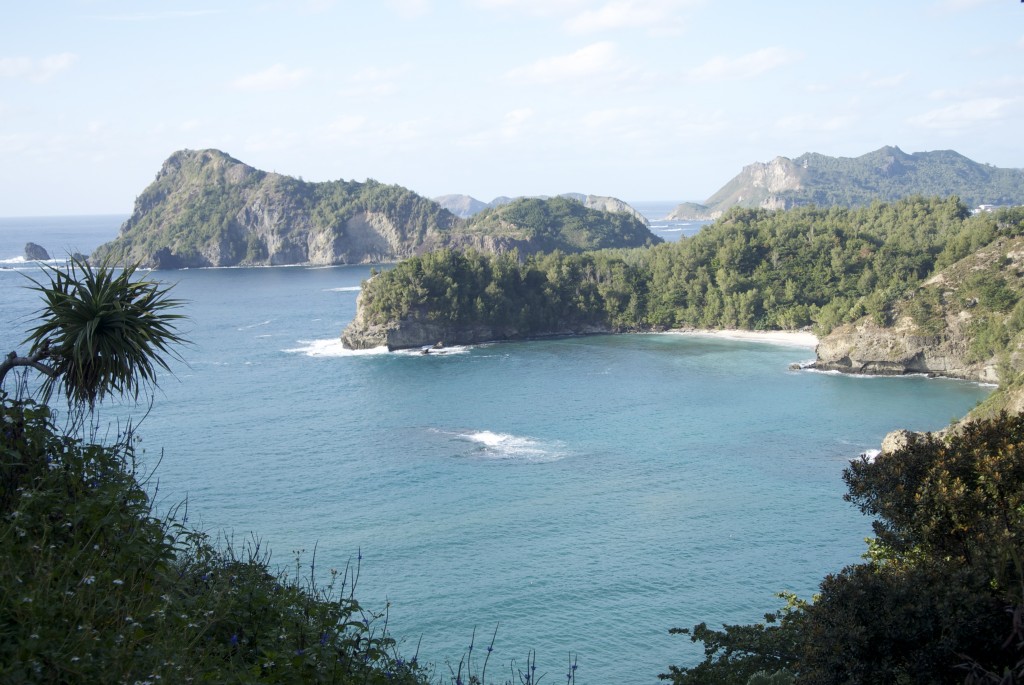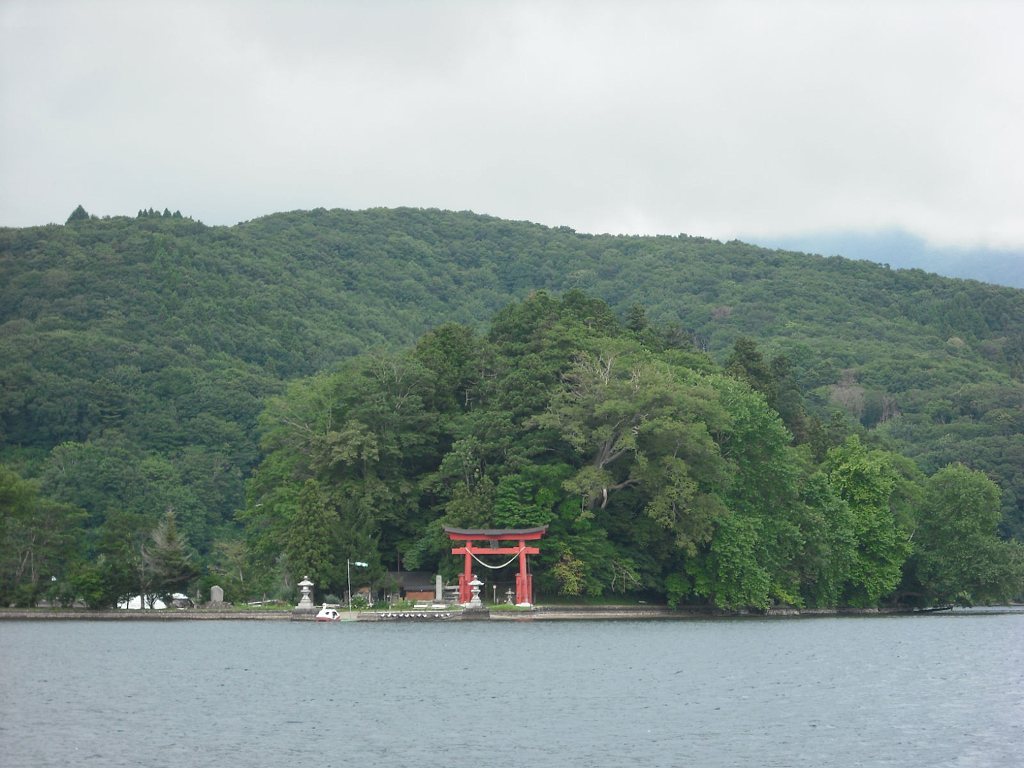
Benten island and shrine, just off Shiraishi in the Inland Sea
Green Shinto friend, Jake Davis, has posted some wonderful pictures of sacred islands on his blog, More Glimpses of Unfamiliar Japan. He points out that these are not much written about in contrast to other sacred features such as rocks and mountains, though as one commentator notes, they could be considered sacred ‘mountains’ that stick up out of the sea.

Abode of the gods? Celestial blues in the Ogasawara Islands...
For myself, I’ve always felt attracted to islands and once harboured serious dreams of living on the Scilly Isles in the UK. There are only two places in the world where I’ve felt poetically inspired, and both times were on islands when the poetry literally gushed up within me, demanding to be written. Once was on Skyros in the Aegean Sea, and the other was on Shiraishi in the Inland Sea. The latter moved me to write a small illustrated publication, Spring Buds and Autumn Leaves.
So what is it about islands? Clearly the invigorating nature of sea-air is one special factor. Another must be the way they represent microcosms of the larger landmass on which we live. There is an otherworldliness about them, for they’re separated from the ordinary world by the waters that lie in-between. Uninhabited islands in particular. They are pure and untainted by human hand, exuding the sense that if the gods descended, they would surely choose such places as their abode.
Remember Japan’s Creation Myth – Izanagi and Izanami descend first onto the primal island of Onogoro which they had created out of the brine that swished below them. There they erected an august pillar and a giant hall, before making love and giving birth to the Eight Island Country. One might take this as a symbolic, metaphorical and poetic rendering of immigrants who arrived in Japan from across the sea, one island at a time. Or one could just say that islands are divine. Take a look at Jake’s pictures and see for yourself.

The torii on the island in Lake Nojiriko beckons the visitor into a realm of unspoilt greenery set amidst the blue beauty of the surrounding waters.
Click here for an account of a Japanese island in spring, replete with sacred rocks, and here for an account of the same island in autumn.

Your little book makes Shiraishi come alive John. Having the time to explore the nooks and crannies, over different seasons, is a real privilege. Capturing that experience in words and images means that you can share it with others. Thanks for that. Jake’s post suggests that knowledge about many of the smaller sacred islands is being lost. A sign of the times.
Thank you, Jann, it’s good to know that you enjoyed the descriptions and pictures. I’m sure you’d love the island if you care to stay at the International Villa on your next visit to Japan. Plenty of sacred rocks, nooks and islets to explore. And an 88-shrine pilgrimage to work around… (May 6, Amy Chavez is organising a run around the trail, and details can be found on her Daily Moooo website.)
John,
I am interested in becoming a Shinto Priest. I live in Canada at the present time. I see that there is a correspondence course I can start with through the Prefecture Shrine Office of Osaka. However, I am having trouble finding a contact person or email address to write. Can you help me out? Thanks. ME
Good day… I would say it’s impossible to become a Shinto priest through orthodox channels without 1) fluency in Japanese; 2) attachment of some sort to a shrine. You may want to read through the interviews section of this blog to see how the handful of non-Japanese became priests. You’ll find that Paul de Leeuw and Rev Barrish managed to find ways to train as a priest that necessitated a high level of determination, devotion and persistence in making personal connections. You may want to approach them personally. You’ll also find that others managed to train through the Konpira licensing scheme, but they were fluent in Japanese, resided in Japan and had onsite training with a priest at their home shrine. If you’re able to live in Tokyo, then that might also be a possible path.